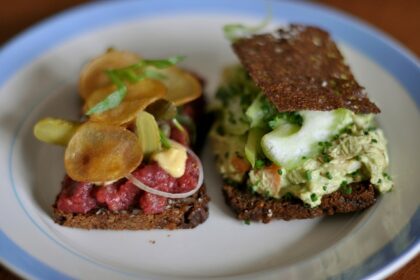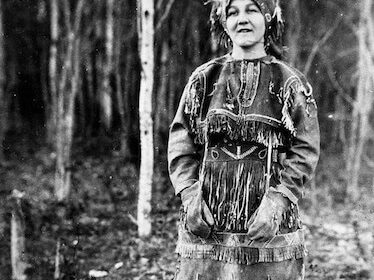
After 7,000 years of conquering and political unrest, the people of Ukraine look for any excuse to celebrate the country they’ve fought long and hard to protect. Christmas, Easter and weddings are all lively affairs, filled with succulent meals of varenyky (perogies) and horilka (vodka) and exuberant bandura music and kalyna dancing. To give you some insight into this colorful culture, here is a guide to festive Ukrainian traditions.
Christmas
As an Eastern Orthodox nation, Christmas is one of the most important holidays of the year and is celebrated on January 7th. While gift giving generally does not play a large role in Orthodox Christmas, Saint Nicolas day is also celebrated on December 19th, where children receive gifts for jolly old Saint Nick. Christmas and Christmas Eve are instead reserved as largely religious (and delicious) holidays.
Food
Christmas celebrations begin on Christmas Eve (January 6th) with the Holy Supper. This event begins as soon as the first star appears in the night sky. Once this happens, families sit down in front of a kolach loaf of braided bread and a beeswax candle is placed in its center to represent the Star of Bethlehem.
After a prayer and toast of horilka, the first dish to be eaten is kutia, a mixture of grain and honey. Following this dish, a total of 12 dishes will have been prepared for the meal. These represent the 12 apostles and contain no meat or dairy, only grains, vegetables and fish. Common dishes include pickles, borsch, varenyky, sauerkraut and fried herring.
The following day, a Feast of Jordan is celebrated in a similar style to the previous night; however, on this occasion the fast will have finished and dishes may contain meat and dairy.
Both meals are joyous and sacred family events. Intimate dinners provide the perfect setting for families to bond over their babas’ (grandmothers’) cooking and celebrate coming together. With this, anyone who has ever attended a Ukrainian Christmas will know not to over-eat during the day, or to wear tight clothing, as most babas have a rule that no one is allowed to leave their house hungry — which translates to unless they feel like they’re going to explode.

Events
After the Holy Supper, young carolers leave their homes to travel door-to-door, greeting families with songs, like the famous Ukrainian Carol of the Bells, and collecting donations for churches and charities. From there, carolers meet with their families at church for a midnight mass.
Easter
Easter is another important celebration in Ukraine, as it’s the time when Jesus was believed to have risen from the dead. The entire Easter ritual takes place for over a week, beginning with seven holy days of Lent. During this time meat and an additional individually selected item or self-indulging practice is given up. Following this, festivities, fests and pysanky (Ukrainian Easter egg) decorating begins.
Pysanky
Probably the most famously recognized aspect of Ukrainian Easter, colorful pysanky are the crowning jewel of the season and are given as presents to represent the gift of life. Eggs are designed using a beeswax stylus to make a dye-resistant coating. To create colorful designs, eggs are dyed several times, with additional designs being added with each additional layer of color. Once the design has been completed, the wax is melted off using a candle and the full creation is finally revealed.
The excitement of the returning spring season eventually inspired many ornate design patterns, turning pysanky creating into a true art. Friends and families come together every year to huddle together over their eggs, laughing and gossiping about whom the new egg da Vinci is and whose designs wouldn’t pass through egg-making kindergarten.

Easter Baskets
The now completed pysanky are then placed in a wicker Easter basket along with Easter breads such as paska and babka, ham, sausage, horseradish, cheese and butter. These baskets are then taken to church to be blessed on Saturday and then eaten after service on Sunday.
The baskets not only have religious significance, they also give family chefs a much-needed break from the kitchen, as they are prepared days in advance.
For kids (and kids at heart), when it comes time to eat the contents of the basket the hard boiled eggs take center stage. Everyone is given the chance to choose an egg for the traditional egg-smashing contest. Here, opponents and their eggs are pitted against each other in one-on-one “battles” where eggs are smashed against each other until the surface of one is cracked, revealing a loser. Rounds continue until a sole egg remains. Competition can get quite heated. Strategies can vary greatly, from smashing an opponent full on in hopes of cracking your own egg and getting to be the first person to eat, to false starts and exact hit angles to come out as a winner.
Weddings
Weddings in any culture can be impressive celebrations, but in Ukraine they’re a royal affair with the bride and groom getting crowned during the ceremony. The couple will begin the event by entering the church together as equals and continue through a largely religious ceremony. Following this, the formal tone is replaced by food, drinks and dancing for a fun and festive reception.

Dancing
To get the festivities started, a group of Ukrainian folk-stage dancers may be brought in. These kossak dancers often wear white embroidered shirts with bright and poufy pants or skirts. The dances are often very energetic, with females getting swung off the ground and males performing high split kicks. At a wedding, it’s hard for guests to not follow suit after watching a performance (and having some horilka). They get the full opportunity to show off their skills during the kolomeyka. The band or DJ bringing up a Ukrainian folk song cues this. Wedding guests will form a circle around the dance floor and brave dancers will take turns showing each other their dancing abilities — or lack-there-of.
Wedding Traditions
During the ceremony, there are several traditions that often take place. First, don’t be alarmed if the bride gets kidnapped at some point in the evening. It’s tradition for the groom to have to pay a ransom for her “safe return” to prove his love. After the dance battles and kidnappings, it’s easy to work up an appetite. With this, in addition to the regular wedding cake, Ukrainian weddings also feature a korovai, or wedding bread. This is woven dough, symbolizing the new couple’s life together.
Altogether, Ukrainians hold millenniums of traditions and display them all in a rightfully proud manner. Anyone with the opportunity to experience part of the culture should certainly take the opportunity to do so.
About The Author
Currently working in a museum, Judi Zienchuk has lived everywhere from Southeast Asia to Northwestern Canada. She loves travel, longboarding and coffee flavored ice cream. To get more personal, check out her blog, Travvel Sized.
Latest posts by Judi Zienchuk (see all)
- 5 Common Travel Practices That Are Detrimental For The Environment (And How You Can Easily Change Them) - Oct 7, 2017
- Gingerbread: History, Traditions And Where To See The World’s Sweetest Artwork - Dec 4, 2015
- The Dark Side Of Easter: Child Slave Labor And How To Source Ethical Chocolate This Holiday - Mar 16, 2015
- Tips For Giving Your Trip A Responsible Makeover - Mar 6, 2015
- Going Local In Sumatra, Indonesia - Oct 21, 2014






